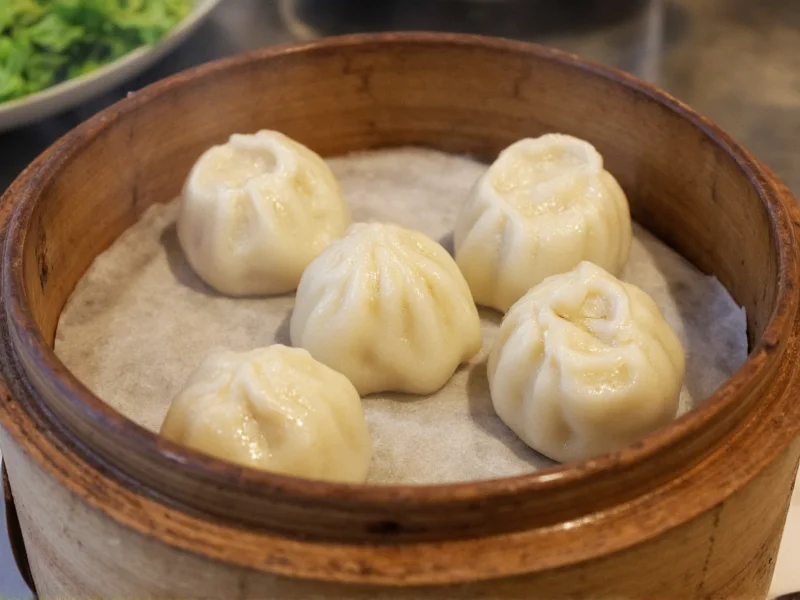The Science Behind Frozen Soup Dumplings
Soup dumplings, or xiaolongbao, contain a gelatin-based broth that solidifies when chilled. When frozen, this broth becomes completely solid, making transportation and storage possible. During cooking, the broth melts back into liquid form—a process requiring precise temperature control. The wrapper must cook through without overcooking, which causes bursting, while the internal temperature must reach at least 165°F (74°C) to fully liquefy the broth.
Understanding this science explains why common mistakes happen. Rapid temperature changes cause the wrapper to weaken before the broth melts, leading to ruptures. Proper technique maintains structural integrity while allowing gradual broth transformation.
Choosing Quality Frozen Soup Dumplings
Not all frozen soup dumplings deliver equal results. When selecting products, examine these critical factors:
| Quality Indicator | What to Look For | Avoid If |
|---|---|---|
| Ingredient List | Simple ingredients: wheat flour, pork, broth, gelatin, seasonings | Long lists with artificial flavors or preservatives |
| Wrapper Thickness | Visible thin, even wrappers in product images | Thick or uneven wrapper appearance |
| Broth Composition | "Natural pork broth" or similar specific description | Vague terms like "flavoring" or "broth base" |
| Storage Temperature | Consistently frozen at 0°F (-18°C) or below | Products that feel partially thawed |
Proper Storage Techniques
Correct storage preserves texture and prevents quality degradation. Follow these guidelines for optimal results:
- Freezer temperature: Maintain at 0°F (-18°C) or lower for maximum shelf life
- Storage duration: Consume within 3 months for best quality (up to 6 months is safe but quality declines)
- Air exposure: Keep in original packaging or transfer to airtight containers to prevent freezer burn
- Temperature fluctuations: Avoid repeated thawing and refreezing cycles
Never thaw soup dumplings before cooking. The solid broth core provides structural support during the initial cooking phase. Thawing causes premature liquefaction, increasing the risk of bursting during preparation.
Step-by-Step Cooking Methods
Each cooking technique produces different textures while maintaining the essential soup center. Choose based on your desired outcome.
Steaming (Recommended Method)
- Line bamboo or metal steamer with parchment paper (pierce holes for steam)
- Arrange dumplings with space between them (they expand during cooking)
- Bring water to a rolling boil in steamer base
- Place steamer basket over boiling water
- Cover and steam for 8-10 minutes for standard size (add 1-2 minutes for larger dumplings)
- Check for doneness: wrappers turn translucent, broth is fully liquefied
Pan-Frying (Sheng Jian Bao Style)
- Heat 1-2 tablespoons oil in non-stick skillet over medium heat
- Arrange dumplings in single layer, flat side down
- Fry 2-3 minutes until golden brown on bottom
- Add 1/4 cup water, immediately cover with tight-fitting lid
- Reduce heat to medium-low and steam 6-8 minutes
- Uncover and cook 1-2 minutes to crisp bottom
Air Frying (Modern Alternative)
Air frying works well for frozen soup dumplings when done carefully:
- Preheat air fryer to 350°F (175°C)
- Lightly spray dumplings with oil
- Cook for 6 minutes
- Reduce temperature to 300°F (150°C)
- Cook additional 4-5 minutes
- Rest 2 minutes before serving (critical for broth stabilization)
Common Mistakes and How to Avoid Them
Even experienced cooks encounter issues with frozen soup dumplings. These solutions address frequent problems:
Dumplings Bursting During Cooking
Cause: Rapid temperature change or overfilling
Solution: Never thaw before cooking; ensure proper spacing in steamer; avoid overcrowding; use gentle, consistent heat
Soggy Wrappers
Cause: Excess moisture during cooking
Solution: Line steamer with parchment; avoid adding too much water when pan-frying; let dumplings rest 1-2 minutes after cooking
Cold Centers or Solid Broth
Cause: Insufficient cooking time
Solution: Extend cooking time by 1-2 minutes; verify internal temperature reaches 165°F (74°C); avoid opening lid frequently during cooking
Sticking to Cooking Surface
Cause: Inadequate oil or improper surface preparation
Solution: Use parchment paper for steaming; ensure proper oil amount when pan-frying; preheat cooking surface before adding dumplings
Serving and Enjoyment Tips
Maximize your soup dumpling experience with these professional techniques:
- The proper bite: Place dumpling in spoon, nibble small opening in wrapper, sip broth first, then enjoy with dipping sauce
- Traditional dipping sauce: Equal parts black vinegar and soy sauce, with thin ginger matchsticks
- Accompaniments: Serve with light broth-based soup and simple vegetable side
- Timing: Eat immediately after cooking—soup dumplings deteriorate quickly as wrappers absorb moisture
Troubleshooting Guide
When problems occur, these fixes can often save your meal:
Partially Burst Dumplings
If dumplings rupture slightly but maintain structure, carefully transfer to serving plate. The broth will mostly remain contained. Serve immediately and instruct diners to eat carefully.
Overcooked Wrappers
When wrappers become too soft but haven't burst, create a flavorful broth to serve them in, transforming them into soup dumpling wontons. Add scallions and a dash of sesame oil.
Undercooked Centers
Return dumplings to steamer for additional 2-3 minutes. Check one first to verify proper internal temperature before returning all to heat.











 浙公网安备
33010002000092号
浙公网安备
33010002000092号 浙B2-20120091-4
浙B2-20120091-4